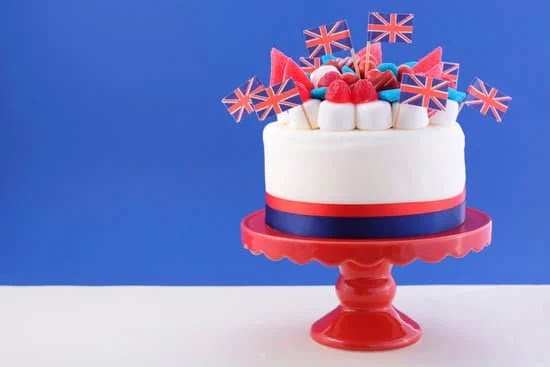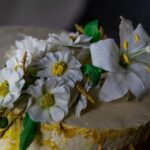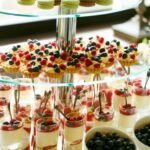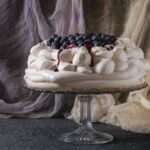Easter is a time of joy, renewal, and delicious treats. As the holiday approaches, anticipation begins to build for all the festivities that come along with it. And at the center of it all stands the pièce de résistance – the Easter cake. This beautifully decorated confection not only satisfies our sweet tooth but also serves as a symbol of celebration and abundance.
In this blog post, we will guide you through the art of creating stunning decorations for your Easter cake. From fondant masterpieces to whimsical chocolate creations, we’ll explore various techniques and ideas that will elevate your cake to new heights. So get ready to wow your family and friends with mesmerizing designs inspired by Easter’s vibrant colors and timeless symbols.
The importance of a beautifully decorated Easter cake cannot be overstated. It is not just a dessert; it is a centerpiece that brings people together during this special time of year. Whether you’re hosting a festive gathering or simply want to add some flair to your family’s meal, an intricately adorned cake is sure to leave a lasting impression.
So put on your apron, get out those piping bags and molds, and let’s embark on a journey filled with creativity, inspiration, and mouthwatering delights. Get ready to create the most spectacular Easter cake that will have everyone talking long after the last crumb has been devoured. Let’s set the scene for an unforgettable celebration.
Easter-Inspired Fondant Decorations
Fondant decorations have become increasingly popular for cake decorating due to their versatility and ability to create intricate designs. When it comes to Easter cakes, fondant can be used to elevate the cake to new heights and create a visually stunning centerpiece for your celebrations. In this section, we will explore the wonders of fondant decorations and provide tips and inspiration on how to mold and shape fondant into Easter-themed designs.
Molding and shaping fondant may seem intimidating at first, but with a few helpful tips, anyone can create beautiful Easter-inspired decorations. One important tip is to knead the fondant until it becomes soft and pliable, making it easier to work with. Another tip is to use cornstarch or powdered sugar on your working surface and rolling pin to prevent sticking.
There are endless possibilities for incorporating popular Easter symbols into your fondant decorations. Some common Easter-themed designs include adorable bunnies, whimsical flowers, colorful Easter eggs, baby chicks, and even cute little lambs. These designs can be created using various tools such as cookie cutters or by hand sculpting the shapes.
| Fondant Decoration | Description |
|---|---|
| Bunny | A classic Easter symbol that adds charm and playfulness to any cake. |
| Easter Egg | Colorful eggs represent new life and can be decorated in various patterns. |
| Flower | Beautiful blossoms in vibrant colors bring a touch of spring to your cake. |
Remember that practice makes perfect when working with fondant decorations. Start with simple shapes before moving on to more complex designs. With a little patience and creativity, you can elevate your Easter cake to new heights with stunning fondant decorations that are sure to impress your guests.
Creative Buttercream Techniques
Buttercream is a popular and versatile frosting that can be used to create beautiful and impressive designs on Easter cakes. With its smooth texture and ability to hold intricate shapes, buttercream allows for endless creativity when it comes to cake decorations. In this section, we will explore various buttercream techniques that are both easy to master and perfect for adding an extra wow factor to your Easter cake.
One of the most common buttercream techniques for Easter cake decorations is piping. Piping involves using a pastry bag fitted with different tips to create decorative patterns and designs on the cake’s surface. Popular piping techniques include rosettes, ruffles, borders, and writing. By using different shaped tips and varying pressure on the pastry bag, you can achieve a wide range of unique designs.
To get started with piping buttercream decorations, make sure your buttercream frosting is at the right consistency – not too soft or too stiff. Fill a pastry bag with the desired tip and gently squeeze the bag while applying even pressure to create your desired design. Practice on a piece of parchment paper before moving onto your actual cake to ensure precision and control.
Another creative technique for buttercream decorations is called the “watercolor” effect. This technique involves blending different shades of colored buttercream onto the cake’s surface to create a soft gradient or ombré effect. To achieve this effect, prepare multiple bowls of buttercream in different shades using food coloring.
Using an offset spatula or palette knife, apply small dabs of each shade onto the cake in random spots. Gently blend the colors together using swirling motions until you achieve your desired effect.
| Buttercream Technique | Description |
|---|---|
| Piping | Using a pastry bag and different tips to create decorative patterns and designs on the cake’s surface. |
| Watercolor Effect | Blending different shades of colored buttercream onto the cake’s surface to create a soft gradient or ombré effect. |
Whimsical Chocolate Decorations
Chocolate decorations can add a touch of charm and delight to your Easter cake. Not only are they delicious to eat, but they also offer endless possibilities for creating intricate shapes and designs that will impress your guests. In this section, we will explore the techniques for tempering chocolate and share some ideas for incorporating chocolate Easter eggs, bunnies, and flowers into your cake.
Techniques for Tempering Chocolate
Tempering chocolate is an essential step in creating smooth and shiny chocolate decorations. The process involves melting the chocolate and then cooling it to specific temperatures while stirring to align its cocoa butter crystals. This ensures that the chocolate sets properly and has a glossy appearance.
There are various methods for tempering chocolate, including the seeding method, the tabling method, and the microwave method. Each technique has its advantages and challenges, so it’s important to choose one that suits your needs and preferences. Regardless of the method you choose, practicing proper tempering techniques is crucial for achieving professional-looking results.
Ideas for Chocolate Easter Decorations
Incorporating chocolate Easter eggs, bunnies, and flowers into your cake adds a whimsical touch that is sure to delight both children and adults alike. One idea is to create hollow chocolate eggs by using plastic egg molds. Simply melt tempered chocolate, pour it into the molds, let them cool until set, then carefully remove the molds.
Another fun idea is to make adorable chocolate bunnies or rabbits using a bunny-shaped mold. You can even add details like eyes or a bow tie using colored candy melts or royal icing. These cute little creatures can be placed on top of your cake or strategically positioned around its sides.
For floral decorations, consider making delicate chocolate flowers using silicone flower molds. Use colored cocoa butter or edible food coloring to paint details onto the molds before pouring in the melted chocolate. Once set, carefully remove the flowers from the molds and arrange them on your cake for an elegant and eye-catching display.
Edible Flower Arrangements
When it comes to decorating an Easter cake, what could be more visually stunning than edible flower arrangements? Incorporating real flowers into cake decorations adds a touch of elegance and natural beauty, turning an ordinary cake into a captivating centerpiece for your Easter celebration. Edible flowers not only enhance the appearance of the cake but also provide a unique flavor profile that complements the sweetness of the dessert.
To create edible flower arrangements for your Easter cake, it is important to use flowers that are safe for consumption. Here is a list of edible flowers suitable for cakes:
- Tuberose: With its delicate white petals and sweet fragrance, tuberose adds a touch of elegance to any cake.
- Lavender: Known for its calming aroma, lavender blossoms add a lovely purple hue and subtle floral flavor to cakes.
- Marigold: These vibrant orange and yellow petals have a slightly spicy flavor that pairs well with chocolate or citrus-flavored cakes.
- Nasturtium: Nasturtium flowers come in various shades of red, orange, and yellow, and their peppery taste makes them a great addition to springtime cakes.
- Pansies: Pansy blossoms offer pops of vibrant colors ranging from purple and yellow to orange and blue, making them perfect for creating eye-catching designs on your cake.
Once you have gathered your edible flowers, follow these steps to assemble stunning flower arrangements on your cake:
- Prepare the flowers by removing any green parts or wilted petals.
- Wash the flowers gently with water to remove any dirt or debris.
- Allow the flowers to air dry completely before using them for decoration.
- Arrange the dried flowers on top of your frosted cake according to your desired design.
- Consider adding other decorative elements like fresh herbs or sugar pearls to complement the flower arrangement.
Remember to inform your guests that the flowers on the cake are edible, and they should remove them before consuming if they prefer. Edible flower arrangements will surely impress your Easter guests and make your cake a true showstopper.
Incorporating edible flower arrangements into your Easter cake decorations not only adds beauty but also introduces unique flavors and aromas. With a wide variety of edible flowers to choose from, you can create stunning designs that capture the essence of spring. Get creative with your flower arrangements and let your cake blossom with vibrant colors and natural elegance.
Accentuating with Color
Importance of Using Vibrant Colors to Enhance an Easter Cake
When it comes to decorating an Easter cake, vibrant colors are key in creating a visually appealing and festive dessert. The use of bright and lively hues not only captures the spirit of Easter but also adds a sense of joy and excitement to the cake. Whether you choose pastel shades or bold and vibrant tones, incorporating color into your frosting and icing can truly elevate the overall look of your creation.
Discussing Different Types of Food Coloring and Their Applications
To achieve the desired vibrant colors for your Easter cake decorations, it’s important to have a basic understanding of different types of food coloring available. Liquid food coloring is the most common type used in baking and can produce a wide range of shades. It is easy to use and allows for precise control over color intensity.
Gel food coloring is more concentrated than liquid food coloring, meaning you’ll need less gel coloring to achieve the same color intensity. Powdered food coloring is another option, particularly useful when working with chocolate or other oil-based mediums as it doesn’t add moisture.
When using food coloring, it’s important to start with a small amount and gradually add more until you reach the desired shade. Remember that colors may intensify over time, so it’s better to err on the side of caution when adding food coloring. Also, keep in mind that some colors may react differently in certain recipes or icings, so experimentation may be necessary.
Techniques for Achieving Gradient Effects and Ombré Designs
Gradient effects and ombré designs are popular techniques that can add depth and dimension to your Easter cake decorations. To create a gradient effect, start by dividing your frosting or icing into separate bowls.
Add varying amounts of food coloring to each bowl, beginning with just a small amount in one bowl for the lightest shade and gradually increasing the amount of food coloring in each subsequent bowl for darker shades. Use a spatula or piping bag to apply the different shades onto the cake, blending them together where they meet.
For ombré designs, start by choosing two or more colors that blend well together. Begin with the lightest color at the top of the cake and gradually transition to darker shades as you move down.
You can achieve this by using different shades of frosting or icing in separate piping bags and piping them side by side on the cake. Use a clean spatula or an offset spatula to smooth out any visible lines between the colors for a seamless ombré effect.
By accentuating your Easter cake with vibrant frostings and icings, you can create a stunning dessert that is sure to impress your family and friends. Experiment with different colors, techniques, and designs to let your creativity flourish and bring your Easter cake decorations to life.
Paper Crafts and Easter Toppers
When it comes to decorating an Easter cake, paper crafts can offer a delightful and unique touch. Not only are they budget-friendly, but they also allow for endless creativity and customization. Whether you’re looking to create adorable paper Easter bunnies, chicks, or eggs, these DIY decorations will surely elevate your cake to the next level.
To get started with paper crafts for your Easter cake, gather some basic materials such as colored cardstock or construction paper, scissors, glue or tape, and any additional embellishments like googly eyes or ribbons. Once you have your supplies ready, follow these step-by-step guides to create charming paper decorations:
- Paper Easter Bunnies: Cut out bunny-shaped templates from the colored cardstock and decorate them with markers or colored pencils. Add googly eyes and a small pom-pom for the nose. Attach a small ribbon bowtie for extra charm.
- Paper Easter Chicks: Cut out oval-shaped yellow templates from the construction paper and add feather details using a marker or cut-out colored feathers from other pieces of paper. Attach googly eyes and a tiny beak cut from orange construction paper.
- Paper Easter Eggs: Cut out egg-shaped templates in various sizes from different colors of cardstock. Decorate them with patterns using markers or cut-outs of smaller shapes in contrasting colors.
For attaching these paper decorations to your Easter cake securely, you can use toothpicks dipped in melted chocolate or royal icing as adhesive. Insert the toothpick into the base of each decoration, then gently press it into the cake where desired.
Remember to consider food safety when using any materials on your cakes – ensure that all decorations are securely attached and avoid placing them directly on top of frosting that will come into direct contact with edible portions of the cake.
With these adorable DIY paper crafts as cake toppers, you can add a playful and whimsical touch to your Easter cake. Let your imagination run wild as you mix and match different designs, colors, and shapes to create the perfect finish for your Easter celebration.
Showcasing Easter Themes
Easter is a time of celebration and joy, and what better way to showcase the festive spirit than through beautifully decorated cakes? In this section, we will explore various design ideas and inspirations for Easter cake decorations that will surely leave a lasting impression on your guests.
One popular Easter theme that can be incorporated into cake designs is the use of Easter baskets. These baskets symbolize new beginnings and are often filled with colorful eggs and treats. To create an Easter basket design on your cake, you can use chocolate or fondant to mold a basket shape and fill it with miniature fondant eggs or candy-coated chocolates. Adding edible grass made from tinted coconut flakes can bring an extra touch of realism to the design.
Another charming Easter theme to consider is nests. Nests are synonymous with springtime and represent new life. To incorporate nests into your cake decoration, you can create edible nests using shredded wheat cereal or chow mein noodles coated in melted chocolate. Place these nests on top of the cake and fill them with pastel-colored candy eggs or jelly beans for a delightful display.
When it comes to colors, pastel shades are often associated with Easter. You can showcase these soft hues by using ombré designs on your cake. Ombré involves blending different shades of the same color from dark to light or vice versa. Using buttercream or fondant in shades of pink, blue, yellow, or purple, you can create a gradient effect on the sides of your cake for a visually stunning result.
Incorporating texture and patterns in your Easter cake decorations can also add visual interest. Consider using embossed fondant molds to create intricate designs such as flowers, vines, or lace patterns that adhere to an Easter theme. Alternatively, you could use stencils and food coloring to create beautiful patterns on the surface of your cake.
By incorporating Easter themes such as baskets, nests, pastel shades, and textures, you can create visually appealing cake decorations that capture the spirit of Easter. Let your creativity soar as you experiment with different design elements and techniques to make a stunning centerpiece for your Easter celebration. The possibilities are endless, so have fun and enjoy the process of bringing your imagination to life on a delectable canvas.
Conclusion
The conclusion of this article serves as a reminder to readers to unleash their creativity and create a stunning Easter cake. Throughout the blog post, various techniques, tips, and inspirations have been provided to help readers elevate their cake decorations to new heights. This section emphasizes the importance of Easter cake decorations and encourages readers to let their imagination flourish.
Easter is a time of celebration and joy, and a beautifully decorated cake adds to the festive spirit. The article has explored different decoration techniques such as fondant decorations, buttercream techniques, whimsical chocolate decorations, edible flower arrangements, vibrant frostings and icings, and even DIY paper crafts as toppers. Each section has provided step-by-step instructions and tips on how to achieve impressive designs.
Now it’s up to the readers to take these ideas and techniques and make them their own. Unleash your creative side. Let your imagination run wild as you experiment with different colors, shapes, textures, and patterns. The possibilities are endless when it comes to Easter cake decorations.
Remember that the visual appeal of a cake can greatly enhance the overall experience for both the baker and the guests. So take your time, enjoy the process, and create something truly stunning. Whether you’re making an Easter-themed cake for family or friends or showcasing your skills at a bake sale or party, let your imagination flourish as you bring your vision to life.
In conclusion, don’t underestimate the power of beautifully decorated Easter cakes. With the techniques, tips, and inspirations provided in this blog post, you have all the tools necessary to create a stunning centerpiece that will impress both visually and gastronomically. So grab your apron, gather your supplies, trust in your creative abilities, and let your imagination flourish as you embark on creating a memorable Easter cake.
Frequently Asked Questions
How to decorate an Easter cake easy?
Decorating an Easter cake can be made easy by following a few key steps. Firstly, start with a pre-made or homemade cake of your choice. Next, choose a theme or color scheme that reflects the spirit of Easter. Some popular options include pastel colors, spring flowers, or Easter-themed designs such as bunnies or eggs.
Use buttercream frosting to cover the cake evenly and smoothly. Then, add decorations like edible confetti, sprinkles, or miniature chocolate eggs for added flair. Finally, consider adding a festive touch with a ribbon around the base of the cake or placing it on a decorative serving plate. With these simple steps, you can easily create a beautiful Easter cake.
How to decorate an Easter egg cake?
Decorating an Easter egg cake can be a fun and creative project for both kids and adults alike. Begin with baking two round cakes and allow them to cool completely before starting the decoration process. Once cooled, stack the two cakes on top of each other and frost them with buttercream icing in any color you desire – perhaps pastel shades like pink or blue would work well for an Easter egg theme.
Use a piping bag fitted with a small round tip to create intricate designs on the outside of the cake that resemble patterns found on decorated eggs. Alternatively use gel-based food colors to paint colorful designs onto white fondant cut-outs shaped like eggs which can then be placed on top of the frosted cake. Remember to embrace creativity and experimentation when decorating your Easter egg cake.
What are the 5 kinds of cake decorating?
There are five main types of cake decorating styles: buttercream piping/icing, fondant/gum paste modeling, royal icing techniques, chocolate/candy-based decorations, and airbrushing/color spraying effects. Buttercream piping involves using different types of nozzles to create various shapes like rosettes, swirls, vines, or borders directly onto cakes or cupcakes using buttercream icing as the medium. Fondant/gum paste modeling involves shaping edible sculpting materials like fondant or gum paste into various shapes, such as figurines or flowers, which are then placed onto cakes as decorations. Royal icing techniques involve using a thick white icing to create intricate designs like lacework or piped flowers that harden when left to dry.
Chocolate/candy-based decorations involve using melted chocolate, candy melts, or molds to create decorative elements like bows, flowers, or even entire cake toppers. Lastly, airbrushing/color spraying effects involve using an airbrush gun and edible food colors to create spectacular gradients of color on the surface of cakes. These different cake decorating techniques offer a wide range of options for beautifully decorating your baked creations.

Welcome to our cake decorating blog! My name is Destiny Flores, and I am the proud owner of a cake decorating business named Cake Karma. Our mission is to provide delicious, beautiful cakes for all occasions. We specialize in creating custom cakes that are tailored specifically to each customer’s individual needs and tastes.





